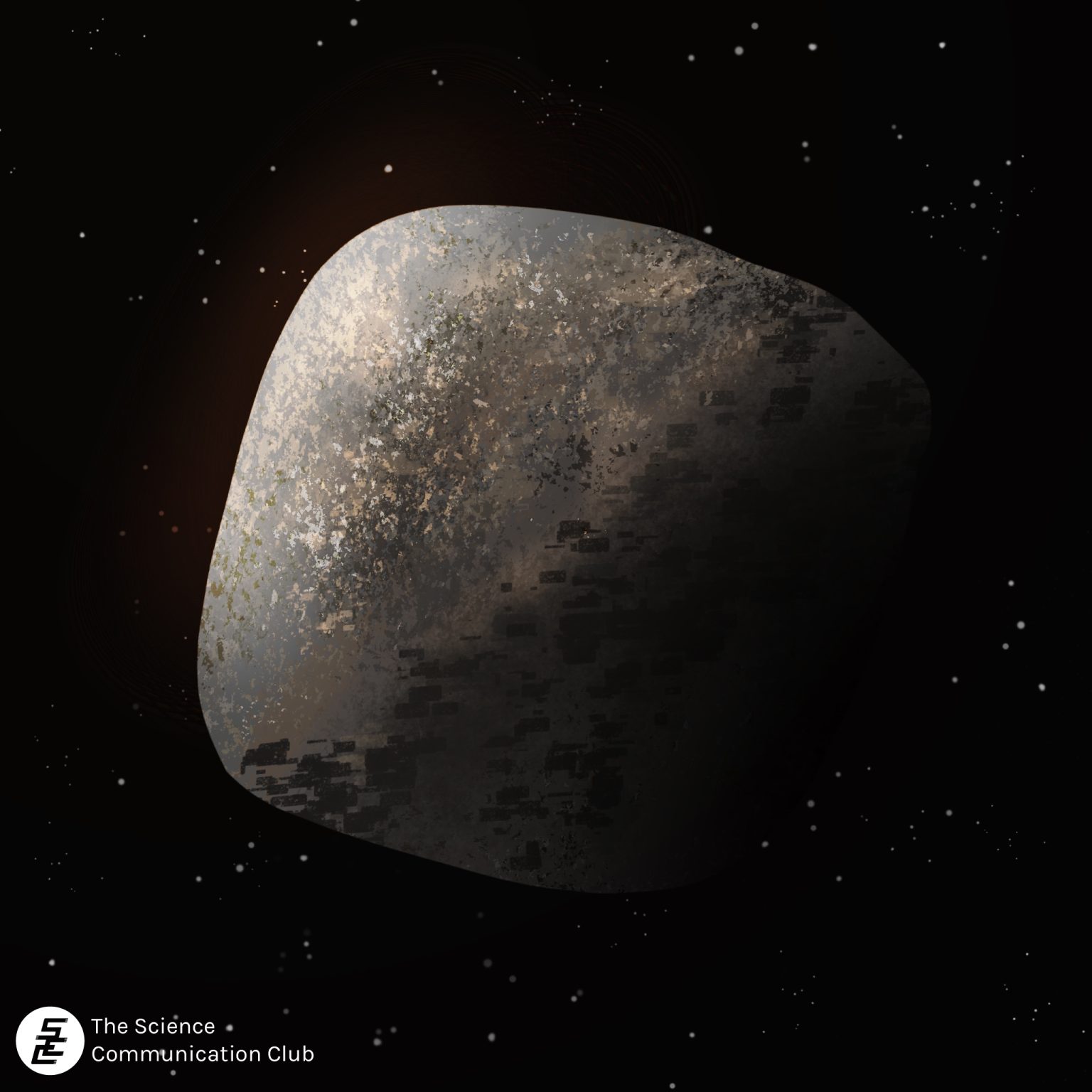
Written by Kumal Udamulla
Illustrated by Maggie Huang
In a world where the Internet and websites like Google Maps make it possible for nearly anyone to see Earth’s surface in detail, is there anything left for us to find? Are the days of explorers setting off in search of the unknown behind us?
Exploration in the 21st century is alive and kicking! Humans are constantly exploring and discovering new things that range from new species to new sub-atomic particles. Throughout our time as explorers into the unknown, we have relied on our innovation and technological prowess to aid us in the journey. From ships to planes to rovers, technology, and science have played a fundamental part in discovering the unknown. In this article, we hope to shed some light on modern explorers’ technologies to explore the land, the sea, and beyond.
Our first tale of exploration begins in the Amazon! A paper published in Nature in 2022 used LiDAR (Light Detection and Ranging) to map and explore settlements in the Bolivian Amazon belonging to the Casarabe culture that is thought to have been present between AD 500 and AD 1400.1 The research team confirmed two large settlement sites and 24 smaller sites.1 The findings supported the idea that the Prehispanic Western Amazon was a well-populated region with small farming settlements.1 This paper and many others rely heavily on the data from LiDAR technology, which has fundamentally changed fields such as archaeology. LiDAR is an active type of remote sensing (which means that it uses laser energy emitted from itself to make measurements) that helps measure distances by using the time taken for a laser signal to be emitted and received.2 LiDAR can create a 3D view of an object it is directed at using a laser range finder and something like a specialized GPS.2 However, the main benefit for researchers using LiDAR in the Amazon is that it can penetrate the canopy of trees.2 This is because the lasers can penetrate the gaps in the canopy and reach the forest’s ground.2 Overall, LiDAR allows researchers to document landscapes that may not be easily accessible.

A paper from 2012 praised LiDAR as a revolutionary piece of technology that would be a catalyst for new discoveries.3 Specifically, the paper highlights how LiDAR would help better understand the use of space and buildings in ancient civilizations.3
Another frontier that has seen significant exploration is the deep sea. A growing technology that aids all aspects of underwater exploration is Autonomous Underwater Vehicles (AUVs).4 These devices are similar to self-propelled mini-submarines and need minimal human supervision.4 This is because it follows a pre-programmed underwater path.4 AUVs’ biggest advantage over their predecessor, Remotely Operated Vehicles (ROVs), is that they are untethered to the ship they are deployed from.4 Unlike submarines, they can move linearly through water.4 AUVs have been used to explore various aspects of the ocean, ranging from underwater volcanism to the distribution of deep-sea organisms.4 Generally, AUVs can descend to a maximum depth of about 6000m.4 However, one of the deepest recorded dives was by a hybrid underwater rover (HROV) named Nereus.5 This device could operate both as a tethered and untethered device. In 2009, it successfully reached a maximum depth of 10,903m in the Challenger Deep of the Mariana Trench, nearly the deepest part of the ocean.5 Unfortunately, Nereus imploded during a later mission in February 2014.6 A constant issue to most deep-sea technology is the extreme pressure at the bottom of the ocean. A recent paper explored the idea of creating robots in the image of deep-sea marine life.7 Stemming from the idea that if these creatures can handle the pressure at these depths, shouldn’t we try to understand why and how? The paper argues that we could produce robots to survive the deep sea by emulating these creatures.7 Along these lines, in 2021, a team of researchers developed a soft robot based on the structure of a deep-sea snailfish, which successfully worked at a depth of 10,900m in the Mariana Trench.8
Looking beyond Earth, humanity has always had a deep fascination with space. From telescopes to rovers, humans have made great strides in space exploration. Given the overwhelming number of technological advancements that are the backbone of modern space exploration, this article will focus on a recent development that has pushed the boundaries of wandering into the unknown. This is the NASA Origins, Spectral Interpretation, Resource Identification, and Security-Regolith Explorer (OSIRIS-REx) mission to the 4.5-billion-year-old asteroid Bennu.9,11 Following its launch in September 2016, the spacecraft reached the asteroid in December 2018.9,10 One of the exciting findings from the mission during its visit to the asteroid was that Bennu’s surface may be loosely packed and more fluid than we previously thought.11 The spacecraft returned to Earth in September 2023 but did not actually land on Earth’s surface. Instead, it dropped off a capsule with the samples in Utah.9 The goal of studying Bennu was to better understand the universe’s history and search for organic compounds on Bennu that could have been the source of their existence on Earth.12 The soil and rock samples are currently being analyzed at NASA, and the good news is that there is more sample material than they expected! The team at NASA has so far collected 70.3 grams just from the material outside and inside the head of the sampler. This bonus material has surpassed the mission’s sample goal of 60 grams.13 An initial sample analysis shows the presence of carbon and water, which are essential for life.14 You can keep up with the future updates for the mission on the NASA website.9
As we look back at the examples we have discussed, human exploration is here to stay, and technology plays a pivotal role in how we explore. Whether it is land, sea, or space, curiosity in what lies ahead will always drive us to explore the unexplored.
Sources:
- Prümers, H., C. J. Betancourt, J. Iriarte, M. Robinson, and M. Schaich. 2022a. Lidar reveals pre-Hispanic low-density urbanism in the Bolivian amazon. Nature 606:325–328. https://www.nature.com/articles/s41586-022-04780-4#Sec5
- Dong, P., and Q. Chen. 2017. Brief Overview of Remote Sensing. Pages 1–17 Lidar Remote Sensing and applications. essay, CRC Press, Boca Raton. https://www-taylorfrancis-com.myaccess.library.utoronto.ca/books/mono/10.4324/9781351233354/lidar-remote-sensing-applications-pinliang-dong-qi-chen
- Chase, A. F., Chase, D. Z., Fisher, C. T., Leisz, S. J., & Weishampel, J. F. (2012). Geospatial Revolution and Remote Sensing Lidar in Mesoamerican archaeology. Proceedings of the National Academy of Sciences, 109(32), 12916–12921. https://doi.org/10.1073/pnas.1205198109
- Wynn, R. B., Huvenne, V. A. I., Le Bas, T. P., Murton, B. J., Connelly, D. P., Bett, B. J., Ruhl, H. A., Morris, K. J., Peakall, J., Parsons, D. R., Sumner, E. J., Darby, S. E., Dorrell, R. M., & Hunt, J. E. (2014). Autonomous underwater vehicles (auvs): Their past, present and future contributions to the Advancement of Marine Geoscience. Marine Geology, 352, 451–468. https://doi.org/10.1016/j.margeo.2014.03.012
- Bowen, A. D., Yoerger, D. R., Taylor, C., McCabe, R., Howland, J., Gomez-Ibanez, D., Kinsey, J. C., Heintz, M., McDonald, G., Peters, D. B., Bailey, J., Bors, E., Shank, T., Whitcomb, L. L., Martin, S. C., Webster, S. E., Jakuba, M. V., Fletcher, B., Young, C., … Hulme, S. (2009a). Field trials of the nereus hybrid underwater robotic vehicle in the Challenger Deep of the mariana trench. OCEANS 2009 https://doi.org/10.23919/oceans.2009.5422311
- Woods Hole Oceanographic Institution. (2023). Hybrid Remote Operated Nereus. Ocean Robots: Nereus. https://www.whoi.edu/oceanrobots/robots/nereus-phone.html
- Li, G., Wong, T.-W., Shih, B., Guo, C., Wang, L., Liu, J., Wang, T., Liu, X., Yan, J., Wu, B., Yu, F., Chen, Y., Liang, Y., Xue, Y., Wang, C., He, S., Wen, L., Tolley, M. T., Zhang, A.-M., … Li, T. (2023). Bioinspired soft robots for deep-sea exploration. Nature Communications, 14(1). https://doi.org/10.1038/s41467-023-42882-3
- Chen, X., Zhou, F., Li, G., Cao, X., & Li, T. (2022a). Self-powered soft robot in the Mariana Trench. Chinese Science Bulletin, 67(23), 2697–2699. https://doi.org/10.1360/tb-2022-0605
- NASA. (2023). OSIRIS-Rex – Nasa Science. https://science.nasa.gov/mission/osiris-rex/
- Morton, E. (2023, March 28). 2018: Arrival at Bennu – a world full of surprises . NASA. https://blogs.nasa.gov/osiris-rex/2023/03/28/2018-arrival-at-bennu-a-world-full-of-surprises/
- Morton, E. (2023b, March 31). 2020 – 2023: Touchdown! and goodbye. NASA. https://blogs.nasa.gov/osiris-rex/2023/03/31/2020-2023-touchdown-and-goodbye/
- NASA. (2023b). OSIRIS-Rex faqs – nasa science. https://science.nasa.gov/mission/osiris-rex/osiris-rex-faq/
Morton, E. (2023c, October 20). OSIRIS-Rex Mission – origins, spectral interpretation, resource identification, security-regolith explorer. NASA. https://blogs.nasa.gov/osiris-rex/